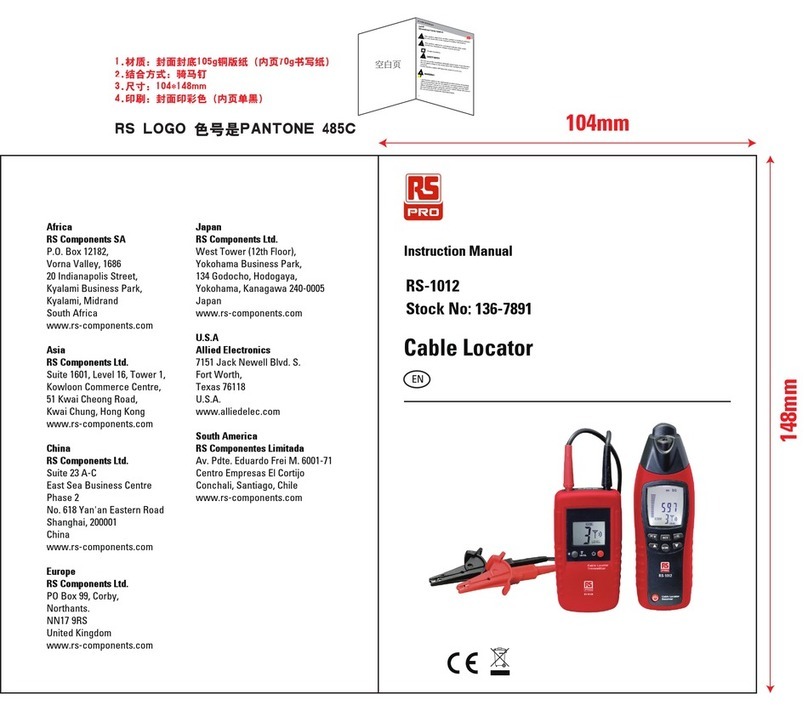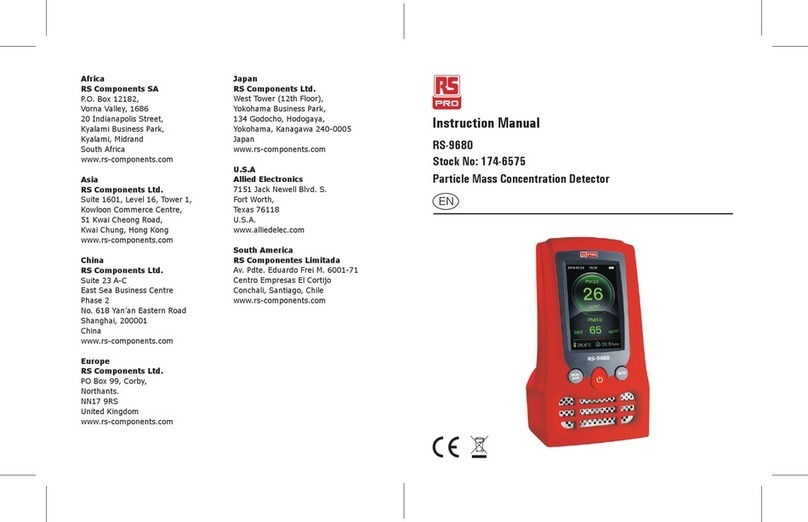
6
Advanced programming
Parameter Name Default Value Range / Options Description
Detector Parameters
Walk Test LED Off On or Off When set to On this causes a red LED to flash on the sensor when it detects
movement. Use this feature to check for adequate sensitivity levels.
Time Out
(Time adjustment)
20 minutes 0-99 minutes Once the detector is turned on, this value sets how long the lights will stay on once
movement has ceased. Select 0 for 10 second delay –use for commissioning only.
Manual Time Out 10 minutes 0-99 minutes When a manual operation occurs, either via the switch input or the infrared, it
invokes the timeout period.
Example 1: a detector in presence mode has a detector timeout of 15 minutes and
a manual timeout of 3 minutes. When the user leaves the room they press the off
button. The sensor will revert to automatic after 3 minutes, and then walking back
in the room will turn the lights on.
Example 2: using the settings above, the user turns the lights off (say for a
presentation) but stays in the room. Every time a movement is detected, the
manual timeout period is re-triggered, but when it doesn’t pick up for the short
timeout period, the sensor will timeout and revert to automatic. This means the
lights may turn on inadvertently during the presentation, if the occupants are still
for the manual timeout period, so adjust the timing carefully.
Sensitivity On 9 1 (min) to 9 (max) Sensitivity level for detecting movement when the detector is already on. *UHS5
sets Sensitivity On and Off to the same value. *
Sensitivity Off 9 1 (min) to 9 (max) Sensitivity level for detecting movement when the detector is off. *UHS5 sets
Sensitivity On and Off to the same value. *
Lux time 0 0 (disabled)
1-99 minutes
If the detector measures the lux level and decides that the output needs switching
on or off as a consequence, the lux time must elapse first. If at any time during the
timed delay the lux change reverses then the process is cancelled. Lux Time
enables absence detection to be implemented with a lux off level set. When the
button is pressed, the lights will go on, regardless of ambient light level. However,
if there is sufficient ambient light, they will turn off again after the Lux Time. Note
that whenever the an external switch is pressed, whether in absence or presence
mode, if the lights were out because of the lux level, they will be immediately
turned on again for at least the Lux Time.
Power Up State On On or Off Select No for a 30 second delay on start up. If Yes is selected, there will be no
delay on start up and the detector will always power up detecting.
Disable Detector N Y or N Disables detection, leaving the relay output permanently off with the dimming
output operational. This mode is used when the unit is for maintained illuminance
only.
Inhibit 4 seconds 1 to 99 seconds When the detector turns off, a delay is instigated to prevent retriggering. In certain
circumstances this delay may not be enough. This parameter allows the delay to
be changed.
Factory default - - Restores factory default settings
User Modes
Override On - - If the lights are off, sending the IR command will turn them on immediately and
revert to automatic operation using the manual timeout period .
Override Off - - If the lights are on, sending the IR command will turn them off immediately. After
the manual timeout period (described above), the sensor will revert to automatic.
Cancel - - Cancels the on or off override, returning the detector to normal operation.
Switching functions
Detection Mode Presence Presence or
Absence
Presence mode allows the output to turn on when movement is detected and off
when movement ceases. Absence mode allows the output to turn off when
movement ceases, but must be manually turned on first.
Lux on level
(Switch level on)
9 1 to 9
For a higher
resolution a scale
of 101-199 is
available
Sets a minimum light level below which the microwave sensor is enabled, allowing
lights to be turned on by movement.
Note: the Lux Level Off value must always be greater than the Lux Level On value.
Lux off level
(Switch level off)
9 1 to 9
For a higher
resolution a scale
of 101-199 is
available
Sets a maximum light level above which the microwave sensor is disabled,
preventing lights from being turned on by movement.
Switch Input Modes
1 position switch
together
Default - Short press on, long press off.
2 position switch
together - - Short press on, short press off.






























